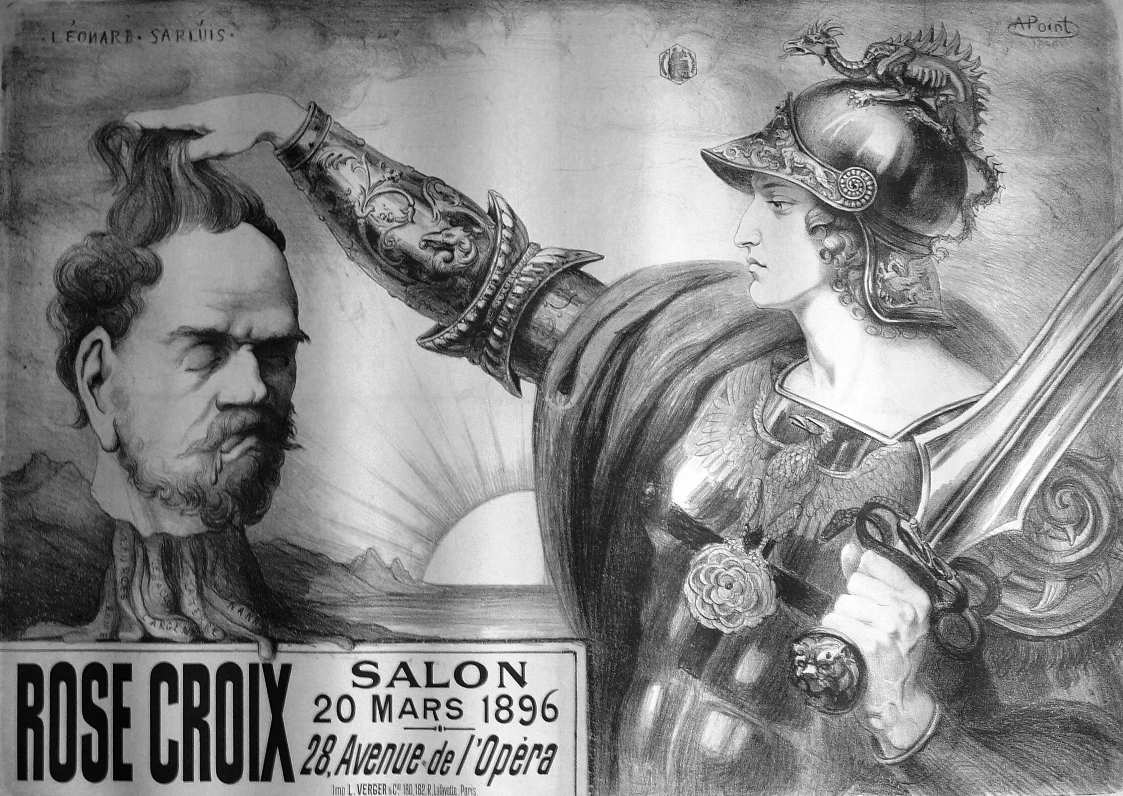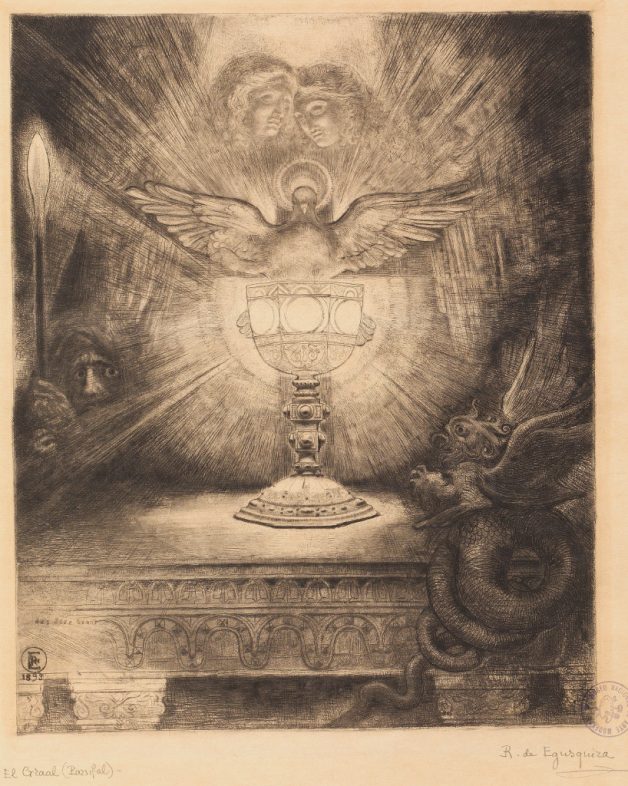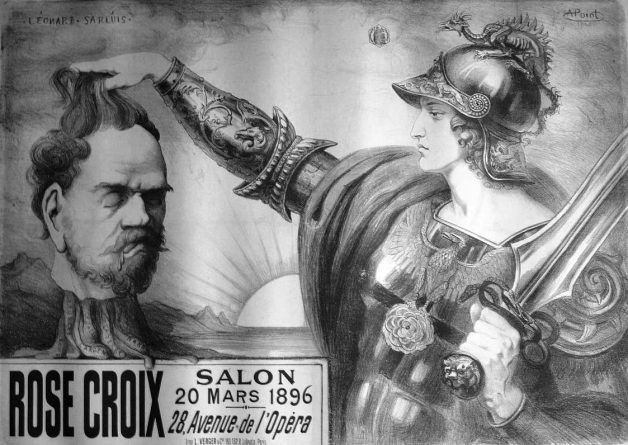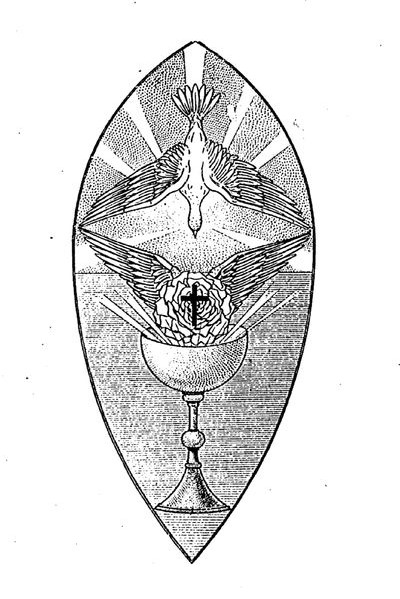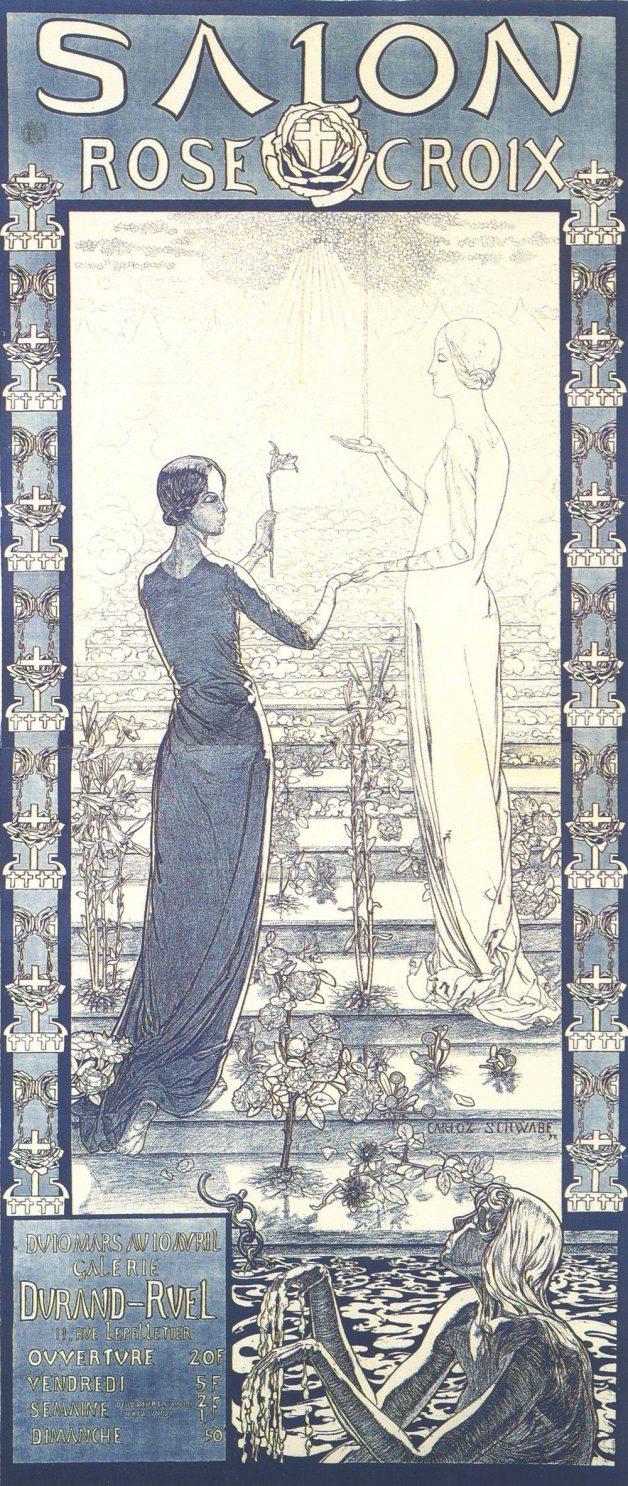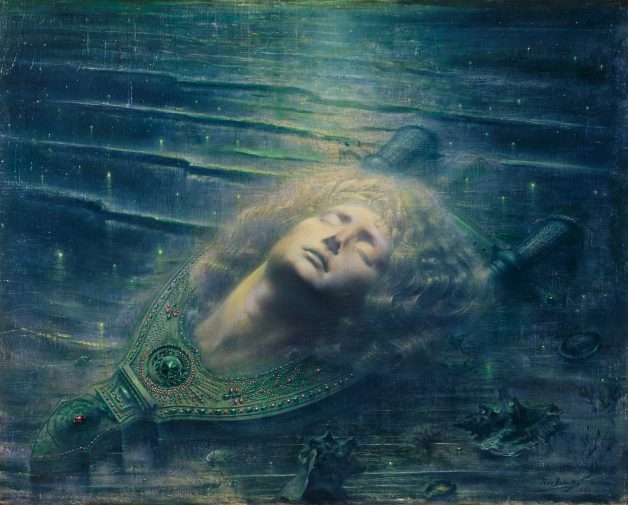
Jean Delville, The Death of Orpheus (Orphée mort), 1839. Oil on canvas, 79.3 x 99.2 cm. Musées royaux des Beaux-Arts de Belgique © 2016 Artist Rights Society (ARS), New York. Photo: Bridgeman-Giraudon/Art Resource, NY
Mystical Symbolism: The Salon de la Rose+Croix in Paris, 1892–1897
In 1892 Joséphin Péladan (1859–1918), a Rosicrucian, self-proclaimed high priest of the occult, author, and critic, organized the first Salon de la Rose+Croix. This annual exhibition in Paris showcased mystical Symbolist art, particularly a hermetic, numinous vein of Symbolism that was favored by Péladan and dominant during the 1890s, a time when religious and occult practices often intertwined. Mysterious, visionary, and mythical subjects, often drawn from literary sources, prevailed in the art at the salons. Images offemmes fragiles and fatales, androgynous creatures, chimeras, and incubi were the norm, as were sinuous lines, attenuated figures, and antinaturalistic forms. Cosmopolitan in reach, the salons featured artists from Belgium, Finland, France, Italy, the Netherlands, Spain, and Switzerland, such as Antoine Bourdelle, Jean Delville, Rogelio de Egusquiza, Charles Filiger, Ferdinand Hodler, Fernand Khnopff, Alphonse Osbert, Armand Point, Gaetano Previati, Georges Rouault, Carlos Schwabe, Alexandre Séon, Jan Toorop, Ville Vallgren, and Félix Vallotton. Mystical Symbolism: The Salon de la Rose+Croix in Paris, 1892–1897 will capture a fascinating, transnational cross section of artists—some well known, others less so—and invite a fresh look at and new scholarship on late 19th-century Symbolist art.
Organized by Vivien Greene, Senior Curator, 19th- and Early 20th-Century Art, with the assistance of Ylinka Barotto, Curatorial Assistant, Mystical Symbolism will feature about 40 works culled from the six Salon de la Rose+Croix exhibitions as well as pertinent historical documents. A musical component with pieces by Erik Satie and others will complement the presentation and underscore how composers played key roles in the development of the movement. The exhibition will highlight central artworks shown at each salon in order to tease out themes such as the role of Orpheus, the adulation of the Primitives, and the cult of personality that developed around figures including Richard Wagner and Péladan himself. These carefully chosen works and groupings, in turn, will allow for an in-depth exploration of the diverse and sometimes opposing concepts that informed Symbolism in the 1890s. A fully illustrated catalogue will comprise essays on the salon and its main themes (Greene); the contemporary reception of the salon (Jean-David Jumeau-Lafond, independent scholar); and the connections between Symbolists tenets and those of early 20th-century avant-garde artists (Kenneth Silver, Professor of Art History, New York University). It will also contain a selected bibliography and artist entries authored by emerging scholars
See full details @ the Guggenheim Museum: Mystical Symbolism: The Salon de la Rose+Croix in Paris, 1892–1897

